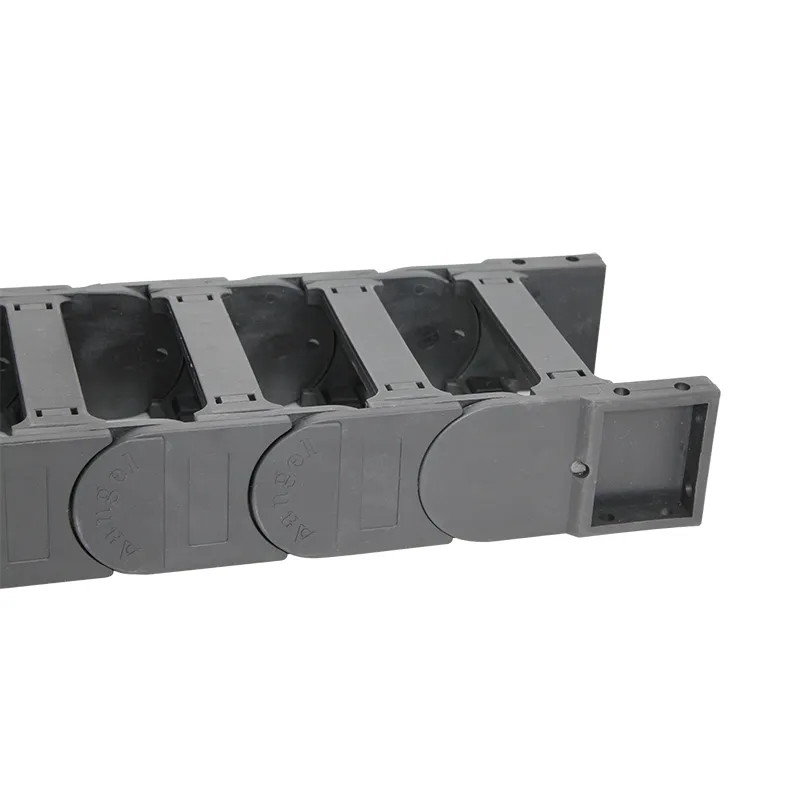mini drag chain
Understanding Mini Drag Chains A Comprehensive Overview
Mini drag chains, also known as cable carriers or drag chains, are integral components in modern machinery, robotics, and various industrial applications. These innovative structures serve an essential purpose managing the movement and protection of cables and hoses in automated systems. Their design facilitates a seamless operation by ensuring that cables are organized, reducing wear and tear caused by friction and movement.
The Design and Functionality of Mini Drag Chains
Mini drag chains are typically constructed from durable materials such as plastic, metal, or a combination of both, making them resistant to abrasion and chemical exposure. Their compact size makes them particularly suitable for applications with limited space, where traditional cable management solutions may not be viable. The modular design of drag chains allows for customization, enabling users to select specific dimensions and configurations to fit their unique needs.
The primary function of a mini drag chain is to guide and protect cables and hoses as they move with machinery components. As machines operate, cables are often subjected to constant stress due to bending, twisting, and lateral movements. Without appropriate support, cables can suffer from damage leading to costly downtime and maintenance requirements. Mini drag chains mitigate these risks by providing a path for the cables to follow, ensuring they remain untangled and safeguarded against potential wear.
Applications Across Industries
Mini drag chains are versatile and find applications across various sectors, including manufacturing, automotive, electronics, and medical technology. In manufacturing, for instance, they are used in CNC machines, robotic arms, and conveyor systems, allowing for smooth operation while keeping cables organized. In the automotive industry, they facilitate the movement of cables in robotic assembly lines, enhancing efficiency and reducing production times.
In the realm of electronics, mini drag chains are crucial in maintaining the organization of wires within complex assemblies, such as computer systems or telecommunication infrastructure. Furthermore, with the rise of automated guided vehicles (AGVs) in warehouses and distribution centres, these chains ensure that power and control cables can move freely without hindrance.
mini drag chain

In medical technology, they provide essential support for equipment like MRI machines and robotic surgical systems, where precision and reliability are paramount. The use of drag chains in these contexts ensures the continual function of critical systems and supports the safe delivery of healthcare services.
Benefits of Using Mini Drag Chains
The adoption of mini drag chains in various applications presents several advantages. Firstly, they significantly prolong the lifespan of cables and hoses by minimizing movement-induced wear. This results in reduced maintenance costs and less frequent replacements, leading to better resource management.
Secondly, drag chains help improve the overall operational efficiency of machines. By maintaining organized cable pathways, mini drag chains reduce the risk of entanglement, allowing for smoother movement and less downtime. In turn, this enhances productivity and ensures that systems operate at optimal performance levels.
Moreover, mini drag chains are easy to install and can be adapted to a wide variety of setups. Their modular nature means that they can be reconfigured as machine designs change or evolve over time, providing long-term utility and value.
Conclusion
In summary, mini drag chains play a vital role in modern industrial and technological applications by ensuring the efficient management and protection of cables and hoses. Their robust design, versatility, and ability to reduce wear make them indispensable in various settings. As industries continue to embrace automation and advanced machinery, the demand for solutions like mini drag chains is likely to grow, further enhancing operational efficiencies and supporting future innovations.








